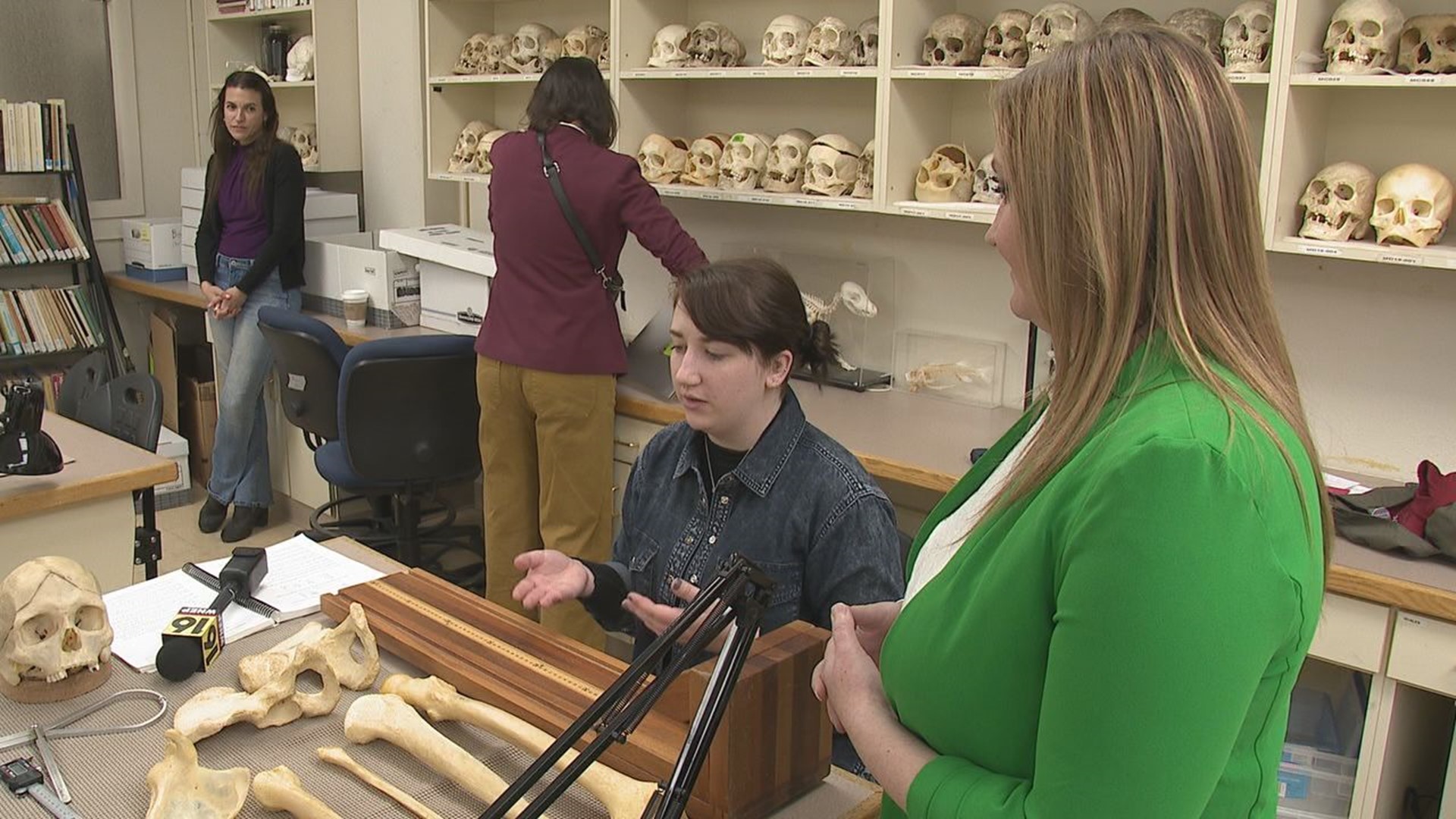ERIE, Pa. — At first glance, it may be startling to see shelves of human skulls inside the forensic anthropology lab at Mercyhurst University, but it's all part of the learning experience for students. They use the bones to determine specific details about them. The graduate program draws students from across the country to the campus in Erie.
"For teaching purposes, we get a lot of donated to science. They want their remains to do some teaching after they're dead," said Dr. Dennis Dirkmaat, the head of the Department of Applied Forensic Sciences.
Dirkmaat has been teaching forensic anthropology and archaeology at Mercyhurst for more than 30 years. Dirkmaat's expertise has helped investigators solve hundreds of cases.
"We don't require the whole skeleton. I mean, we can get one bone and get pretty close to what we have. We can tell approximately how old that individual was at the time of death, and we can base it on just this part of the bone," said Dirkmaat.
The forensic anthropology master's program at Mercyhurst has a small number of students but a big reputation.
"It's pretty unique. I don't know of any other teams like what we do here when we roll up onto a scene with two or three faculty and 15 graduate students," Dirkmaat said.
Dirkmaat says this team gets called out to do a detailed search when human bones are located, along with trying to find other evidence that may be useful to police. The students learn how to map an area, flag evidence, document it, and help collect remains for examination.
"That's very helpful when you go into the workforce then because you've practiced what you've learned in most places, you don't get that," said graduate student Hannah Skropits.
Dirkmaat's team was called to Old Forge in Lackawanna County in March to help state and local officials with the remains of Robert Baron. The pizza shop owner had been missing for more than six years.
"The information that we got is that some remains were found. I was sent a picture and identified as human and said, 'We'll be there the next day,'" Dirkmaat said.
The team went to Susquehanna County late last year after remains were found in a wooded area near Great Bend, where Tyler Barber had last been seen. Dirkmaat says having so many eyes working on one case makes it harder to miss any evidence to help investigators solve that case.
"We work on it for a month or so and go over every detail, try to assess the biological profile, what we have, if there's any animal activity on it. We try to determine why it's scattered, what could possibly be related to that. If there's any trauma, we'll analyze that in detail," said Dirkmaat.
Dirkmaat and his team travel all over Pennsylvania and parts of New York and Ohio when they're called to help in on a case. So far this year, they're already up to over 50 cases.
"We could be called at any point, and they say, 'We have a case in Dayton, Ohio.' And then we jump in the van and head there the next day," Dirkmaat said.
Students say working a case can be grueling at times, and the answers don't always come easy, but it's the result that they find rewarding.
"You're helping develop this profile so that you can possibly bring a family a sense of closure," said graduate student Dorothy Missimer.
Dirkmaat says forensic anthropology and the growing number of students in the field will ensure that more cases get solved.
Download the WNEP app to get breaking news alerts, weather, sports, and important stories at home or on the go.

